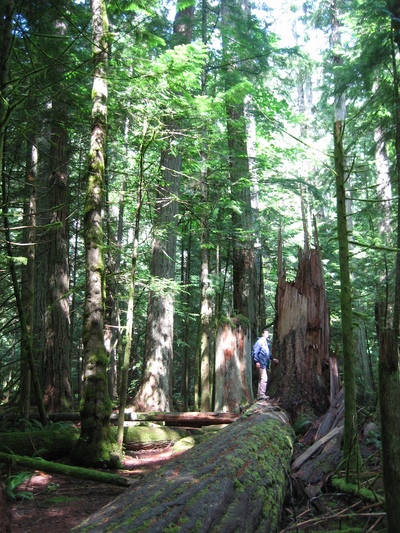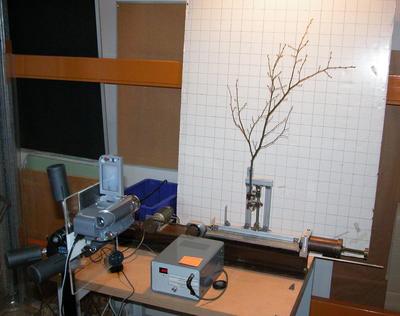| HOME |
| RESEARCH |
| EDUCATION |
| PUBLICATIONS |
| Mathieu RODRIGUEZ | ||||
|
 |

 |
|
|
|
|
Dynamics
of
wind-tree interactions
Wind-tree
interaction is a major concern for forest management. Windthrow and
windbreak result in important economical costs after storm occurences.
Losses can reach up to one year of product, which for a country like
France represents a few billions euros.
The stability of urban trees under wind is also of interest because of the potential human and material risks. Physiologically, the mechanosensing of wind-induced strains is a fundamental issue in understanding tree growth, allometries, and tree postures. |
 |
 |
A
first step in understanding wind-tree interactions is the determination
of tree vibration characteristics.
The role of tree architecture and branch slenderness on tree vibration modes characteristics is explored. Scaling laws of modal characteristics are derived, in order to compare vibration modes of a tree depending on its geometry. For comparison, modal analysis of real trees, whose geometries are recorded in great detail through digitalization, are conducted. Experiments combining a vibration table and image processing are under development. |
|
The
characterization of tree vibration modes gives a framework to
understand the role
of multi-modal dynamics when considering the tree response to the wind
excitation.
The distribution of excitation due to the wind in the whole tree, the eventuality of the breaking of trunk and branches, aerodynamic damping and damping due to impacts between branches, are all mechanisms involved in the wind-tree interactions which are clarified when considering tree multi-modal dynamics. For illustration, this video is an example of a simulation of the multi-modal response of a digitalized walnut to a turbulent wind. |